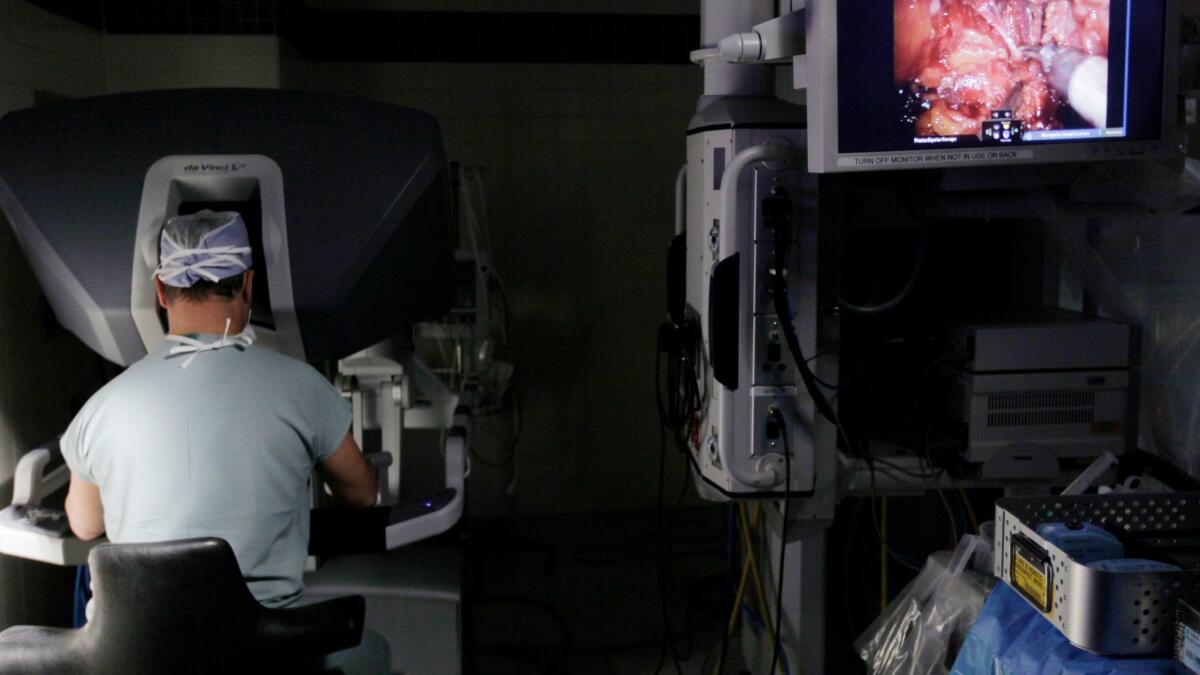Commentary: Prostate cancer: patience and prevention

- Share via
For more than a decade, we’ve known that prostate cancer is over-diagnosed and over-treated, putting men at risk of incontinence and sexual dysfunction to remove what might have been a slow-growing, non-lethal cancer.
When active surveillance of prostate cancer was first proposed over a decade ago, men weren’t racing to be the first to try it. Active surveillance is the careful monitoring of cancer for signs of progression. Unlike lung, breast and colon cancer, there are indolent forms of prostate cancer that do not require surgery or radiation.
Even so, nearly 50% of patients dropped out of early surveillance programs, out of fear that they were being too risky with their health. Because of knowledge from clinical trials and improved surveillance tools, men are feeling a lot more confident about delaying treatment in favor of monitoring.
In fact, it is now understood that nearly 80% of men who go on an active surveillance protocol will never require treatment. And of the 20% of men whose slow-growing cancer does progress, an active surveillance protocol will catch it in time to successfully treat it. (Due to the nature of prostate cancer, patients treated later do just as well as those who are treated at the time of diagnosis.)
The reason active surveillance works is that not all prostate cancers are the same. While some men are diagnosed with a super-aggressive, lethal form of the cancer, many patients develop a cancer that hardly changes or grows at all. If, after analyzing the biopsy, MRI and PSA information for a patient, we believe that a man’s cancer is not going to spread, we are more apt to watch it in hopes that the patient can avoid being over-treated.
That’s not to say that active surveillance is just a fancy way of saying “wait and see.” We place an emphasis on the “active” part of active surveillance. That is why we have our patients come in regularly for testing and monitoring. And it is also why in 2017, we’re launching a comprehensive wellness component for our active surveillance participants.
The wellness program will offer men who are part of our active surveillance program access to a registered dietician for guidance with nutrition, an exercise physiologist and smoking cessation specialists.
Studies have found that healthy habits can help manipulate the growth of cancer. For example, men with non-threatening prostate cancer who ate four to five servings of green, leafy vegetables a week, showed a slower cancer progression than men who did not eat their greens. A similar correlation was found in men who exercised at least three times a day for 30 minutes each time.
By adding a prevention component to our surveillance program, men will be able to take a more active role in their own health.
In addition to wellness, Hoag recently introduced more advanced technology to help improve the detection and treatment of prostate cancer. The UroNav combines pre-biopsy MRI and ultrasound-guided biopsy imaging to create a 3D image of the prostate. This helps locate suspicious areas, reduce both false positives and false negatives and limit the need to remove the entire prostate.
It might seem odd for a urologic oncologist to promote a treatment model that doesn’t, on its face, seem to involve any treatment. But what we have learned over the years is that prostate cancer isn’t like other cancers. Surgery and radiation can have life-altering side effects, and the cancers themselves might not warrant treatment.
That is why we are so heartened that more men are opting to take advantage of active surveillance when they can.
DR. JEFFREY YOSHIDA is a urologic oncologist and program director of Hoag’s Urologic Oncology Program.



